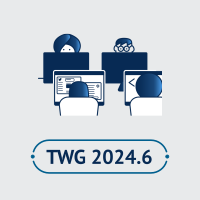Proof of Ownership in the Event of Loss: Use-Case for the Minimum Data Set

Goals
The aim of the TWG is to evaluate existing recommendations and standards for object data capture with regard to this security-relevant basic information. In addition to guidelines and recommendations (such as the ICOM Object-ID, the Security Guidelines for Cultural Property of the Conference of National Cultural Institutions, the Spectrum Procedures of the Collection Trust), the recommendations of the Minimal Data Set Working Group in particular are to be examined for their applicability to unambiguous proof of ownership. The use-case is to be integrated into the process of developing the N4O minimal metadata standards and the N4O object ontology. The TWG aims to build a network that acquires expertise in various issues of security documentation in the context of research data management.
Intended Work Results
In the event of loss quick proof of ownership of objects is essential. The topic is intended to illustrate the usefulness of digital core data and serve as an application example for the minimum data set, digital reproduction and the use of standardised data. Based on the experiences of the participating collections and the critical evaluation of existing guidelines, the intersections with the basic documentation of objects will be discussed by examining the specifications for mandatory and recommended object information in the aforementioned guidelines. Application examples will be developed with regard to the needs of different object categories and material genres. Both should form the basis for recommendations to be derived from this. The results should ensure that the N4O minimal metadata standards and the N4O object ontology are integrated for this area of security documentation, that they include the necessary object data and that they are applicable in the community.
contact and information: Christoph Klose c.klose@smb.spk-berlin.de